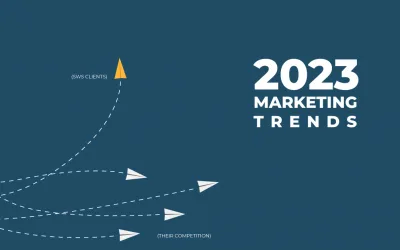In late October 2021, Martin Splitt, Developer Relations specialist at Google, first introduced the concept of a centerpiece annotation and how this optimization strategy impacts the way webpages are analyzed and weighted. As brands and their marketing teams compete to stay ahead of the latest updates in search engine optimization, centerpiece annotations should make their way into every SEO strategy in 2022.
But what exactly is a centerpiece annotation, and how does it help with search engine indexation? Our marketing team helps unpack all of this and more in the article below.
What You Will Learn in This Post:
In this blog, our team helps demystify centerpiece annotations and what they mean for your SEO strategy. Specifically, we’ll cover:
What is a Centerpiece Annotation?
First things first: What exactly is a centerpiece annotation? Put simply, a centerpiece annotation is a piece of introductory content that explains the primary premise of an article, post, or webpage. Martin Splitt breaks it down like this:
“An annotation is a note that explains something. A centerpiece is something that is intended as the center of attention. A centerpiece annotation seems to be like a summary of the topic of the main content.”
An even better way of explaining a centerpiece annotation is referring to the block of content at the beginning of this article. While not considered the full introduction, a centerpiece annotation helps provide additional context to the read in the form of a small blurb or list. It may be helpful to think of a centerpiece annotation as the top of an inverted pyramid for writing: It breaks down the who, what, when, and where, so readers can easily determine whether or not the article will ultimately answer the questions that are most important to them.
How Does a Centerpiece Annotation Help with SEO?
There are many different ways in which a centerpiece annotation can add value to your overarching SEO strategy. First, it gives Google (and searchers) a direct understanding of what is discussed on the page. This will help with the indexation process as the Googlebot will have a better understanding of the semantics of your article, allowing it to more accurately match relevant search queries and serve your page to high-intent users actively researching the topic.
With this improved understanding of what’s on your webpage, Google will also be able to more accurately crawl the page and separate main sections of the content from boilerplate content or the content that appears on every page, such as your header, footer, navigations, or CTA’s.
Another benefit to centerpiece annotations is their ability to drive internal links to deeper sections of your content, allowing you to reference the exact section where Google can find this content on your page. Not only does this provide valuable anchor text that’s great for SEO, but it also makes it easier for passage ranking purposes. With notes and links directly to your content sections, Google will be better able to index specific locations of your page. This can also help for indexing as featured snippets or rich results.
How to Implement Centerpiece Annotations
Now that you understand the strategic value behind centerpiece annotations, now comes the easy part: implementation. Centerpiece annotations don’t require any specific code or technical know-how. Rather, these are simply brief statements about your content and a shortened outline that appears at the top of your page.
Adding this content at the beginning of each page, article, or blog post should become standard practice for your SEO copywriters moving forward in order to remain competitive. When entering your centerpiece annotation, be sure to create links from the annotation to the internal sections of the page. The more creatively you’re able to weave in this content, the better: Remember, consumers can sense when content is inauthentic. As such, it’s important that your annotation fits in seamlessly with the rest of your article.
Bonus Optimization Strategy: Topical Annotations
If you’ve never heard of topical annotations before, that’s because our team invented the.! Think of a topical annotation as the exact opposite of the centerpiece: Rather than acting as a summary of what readers will learn, the topical annotation acts as a way for SEO strategists to reference content elements of the same topic. This promotes internal linking, and gives Google an easier way to understand related topics and how particular subject matter relates to other items that may appear on your page or website.
As you plan ahead for your marketing strategy, it’s important to remain at the forefront of the latest SEO developments. Adding centerpiece annotations and topical annotations as part of your content development strategy will give your brand the competitive advantage it needs to rank higher, remain relevant, and increase web traffic.
Liked What You Learned? Find More SEO Tips from Signature W. Studio!
If you’re interested in learning more about strengthening your SEO strategy, be sure to check out more blog from our team, including:
- The Perfect Charlotte SEO Campaign: Find out what it takes to build the perfect local SEO strategy in the Queen City.
- How to Create an SEO Strategy Around a Single Topic: Build an entire search engine optimization strategy around one topic with help from our experts.
- Passage Ranking: What You Need to Know: Discover everything you need to know about passage ranking and how it impacts your SEO strategy.




